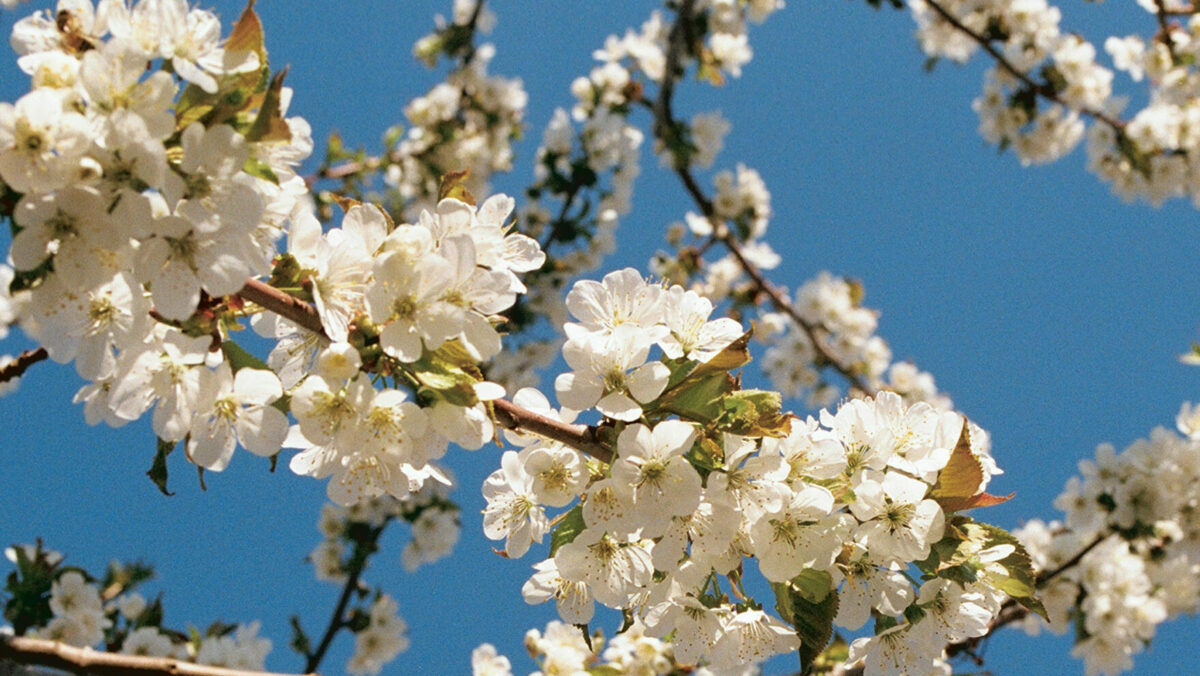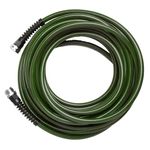How to Grow Cherry Trees for the Best Harvest
The right variety on the right rootstock will give you bowls full of fruit

When gardeners plant a cherry tree, they like to visualize fantastic things—like picking heaps of perfectly ripe, juicy, sweet fruit. If you’ve actually tried to grow a cherry tree, you know that its stores of torment can be bottomless: excessive growth, pollination problems, diseases that rot the fruit or kill the tree, and ravenous birds that always seem to eat the fruit a moment ahead of you. But for the first time in my many years of growing sweet cherries—and I’ve grown them in Washington, California, Utah, Michigan, New Jersey, and Connecticut—I am downright enthusiastic about the home gardener’s chances of real success. The reason for my delight? A series of dwarfing rootstocks that keep trees small and manageable. Matched with grafts that don’t need a mate for pollination, the rootstock produces a nearly ideal tree for the garden. With proper care and the right techniques, you can make your cherry dream come true.
Sweet Cherries Basics
|
What varieties of cherry trees are the easiest to grow?

Almost all fruit trees are grafted onto a rootstock, a major determinant of a tree’s size, pest and disease resistance, and cold hardiness. You usually can see a bit of a crook or swelling in the stem at the graft point of a tree you buy from the nursery. While dwarfing rootstocks for apples are common, for a long time there wasn’t a satisfactory one for cherries. Enter the Giessen rootstocks developed by Werner Gruppe and Hanna Schmidt in Germany. The Giessen series, which has been available in North America for several years and is marketed under the name “Gisela,” varies in the amount of dwarfing it imparts on various types of cherries. For example, Gisela 5 rootstock holds down growth to about 45 percent of a traditional full-size tree, Gisela 6 about 70 percent, and Gisela 7 about 50 percent. Trees on Giessen rootstocks also produce fruit earlier, usually by the third year. Most traditional cherries (not grown on dwarf rootstock) take four or five years.
Also, pollination isn’t the problem it once was. Cross-pollination with another variety used to be necessary for fruit, and not just any variety would do. Even if you grew ‘Bing’, ‘Royal Ann’, and ‘Lambert’ trees, you wouldn’t get a single cherry because those varieties don’t cross. New varieties make cross-pollination easier.

But what if you want only one tree? Well, English and Canadian scientists have developed sweet cherries that are self-fertile, just like most peaches and sour cherries. I have one of these varieties, ‘Lapins’, grafted on a Gisela 5 rootstock, and I see it as nearly the perfect cherry tree. Careful management will keep the tree 6 to 7 feet tall and about as wide, with cherry production running 20 to 30 pounds annually. That’s plenty to keep my family happy. You can expand your options with “two-way” or “three-way” trees—those with multiple varieties grafted on one root—though managing them can be more difficult.

Ideal conditions for cherry trees

- Cherry trees require 8 to 10 hours of direct sunlight daily.
- Winter temperatures should rarely fall below –10°F, but there needs to be enough chill to keep the trees dormant until it’s time to bloom.
- It also can’t be too hot (more than 100°F).
- High temperatures and high humidity encourage disease.
- If you have soggy, shallow soil or heavy clay, perhaps you’d better stick to apples, pears, or plums.
- Cherries like well-drained soil.
- The Giselas have shallower root systems and require more frequent watering in summer than the bigger trees.
Pests to be aware of
The prevalence and persistence of pests and disease depend on your area. We don’t have many insects in my region of the Columbia Basin. We do have the cherry fruit fly, and being in a major commercial fruit-growing region, we must spray for it. In other areas you may be plagued by plum curculios, aphids, pear slugs, mites, wood borers, cherry sawflies, and other creepy crawlers. Some of these, such as aphids and pear slugs, cause minor damage and don’t really require control. For the birds, cloaking the tree with about $15 worth of 1-inch polypropylene mesh should pay for itself in a single season for its frustration relief.
Disease that affect cherry trees
Bacterial canker, common in areas afflicted with wet, cold winters, can kill the tree. In wet, warm springs, brown rot can destroy the blossoms or fruit. Spraying a fungicide is a must. Cherries are more often than not overfertilized, so go slowly with the stuff. Wait and see how the tree grows. If annual growth of new shoots is at least a foot, don’t worry. If it’s less, some nitrogen might be in order. Like most fruit trees, cherry trees need about 1 inch of water per week during the active growing period. With their shallow roots, the Giselas do not tolerate drought well. Also, try to keep competing vegetation away.
How to manage the growth to secure the harvest

If you buy a new tree, it is usually best to maintain a cone shape, with a single central leader like a Christmas tree. The important thing in training a sweet cherry is to allow enough space between main branches and to encourage the development of small fruiting branches.
Pruning and training
The more you prune a cherry tree, the larger the fruit size will be, within limits, but also the smaller the crop and the greater the stimulation of vegetative growth. I tend to go easy on the pruning, especially when the tree is young. Winter pruning should be avoided in many parts of the country because it encourages the spread of bacterial canker. Prune so that air circulates easily through the branches and the foliage stays drier, which helps prevent disease.
Tipping
A good trick for managing the size and shape of the tree is tipping. If new shoots are a foot or more in length by early summer, just pinch out the tip of any new growth that exceeds 12 to 16 inches. The shoots will then start to make numerous side branches at the tip, which will help control height and provide more fruiting branches.
Notching
Sweet cherries have a tendency toward long, bare branches devoid of fruit. Cutting a notch through the bark to the inner hardwood just above a dormant bud often stimulates the bud to grow, a technique that can be used to encourage low, fruitful branching. Eventually these buds along the trunk and branches will die if they aren’t stimulated. So it’s best to do your notching early on wood no older than two years. More than any other fruit trees, sweet cherry trees reach for the sky. The more vertical the branch, the more vegetative the growth. By bending branches 30° to 60°, you will have fewer leaves and more fruit. It’s easy to tie down or brace a branch with a grooved piece of wood. Tree scientists believe that bending branches slows the draining of hormones that are critical for fruiting. And the fruit is what we want. Despite the obstacles, the royal thrill of picking sweet cherries makes it all worthwhile.
A Bowl of Cherry Choices

Although ‘Bing’, ‘Royal Ann’, and ‘Rainier’ are the cherry varieties that you will most likely find at the supermarket, many home gardeners would be better off with less finicky varieties. The self-fertile types work well if you can get your hands on one. The easiest to find is ‘Stella’, which bears fruit similar to ‘Bing’. The cherries are a little softer and a little less prone to cracking, which happens when the fruit absorbs too much water. Other self-fertile varieties are ‘Glacier’ and ‘Sweetheart’.
Working with trees that require a pollinator means more effort but more variety. I like ‘Emperor Francis’, which is light colored with yellow meat and is similar to ‘Rainier’, only with smaller fruit. I also recommend the hardy and crack-resistant black cherry called ‘Kristin’. Because we have not yet put all the good characteristics in a single tree, there will be drawbacks with any combination you select. Make sure what you buy fits your growing conditions.
—Robert A. Norton, a fruit-tree consultant, lives in East Wenatchee, Washington.
Photos, except where noted: FG staff
Fine Gardening Recommended Products

Pruning Simplified: A Step-by-Step Guide to 50 Popular Trees and Shrubs
Fine Gardening receives a commission for items purchased through links on this site, including Amazon Associates and other affiliate advertising programs.

Water Right PSH-100-MG-1PKRS 400 Series, 100-Foot, Olive Green
Fine Gardening receives a commission for items purchased through links on this site, including Amazon Associates and other affiliate advertising programs.
- 3 Pounds
- 1200"L x 0.43"W
- Manufactured in the USA

Johnny’s Selected Seeds Connecta® Cultivation Kit
Fine Gardening receives a commission for items purchased through links on this site, including Amazon Associates and other affiliate advertising programs.






Comments
You have discussed an interesting topic that everybody should know.
https://bestsavingscoupon.com/
Thank you for sharing your helpful guide "How to grow sweet cherries". I love cherries and cherry desserts and especially like the black cherry sort "Christy".It would be nice to find a couple of recipes with homemade cherries. I would like to recommend this site to my colleagues. always find something interesting here. looking forward to the next posts!
https://studyessay.org/
such a great kind of post
https://www.genmarks.com/
Log in or create an account to post a comment.
Sign up Log in